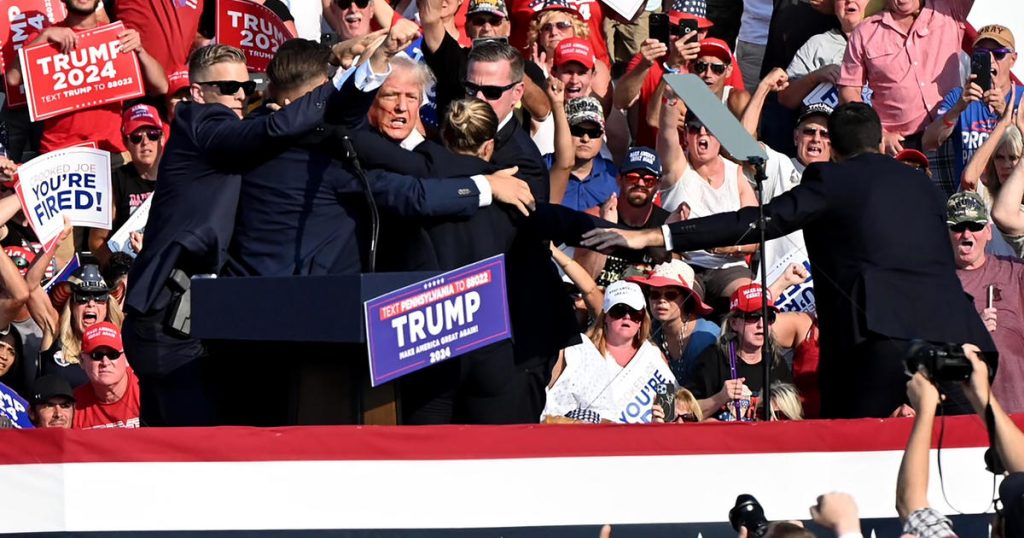An interim Senate report released this week identifies a number of failures in the U.S. Secret Service’s efforts during a July rally for former President Donald Trump, which led to an assassination attempt against him. The report cites problems such as lack of a chain of command, poor coordination with law enforcement, inadequate resources and equipment, and failure to secure the site and ensure the safety of the former president. These failures were deemed preventable and had dire consequences, with the gunman firing eight rounds from an adjacent building and injuring several individuals at the rally.
The Senate report reveals that Secret Service officials at the event had issues with their radios, which impacted communications on the ground. Problems with radios led to a lack of information sharing and coordination, with critical alerts not being relayed to key personnel in a timely manner. This included warnings about suspicious individuals and armed individuals in the area, which were not properly communicated to those responsible for the former president’s security. Additionally, technical problems with drone units further hindered the response to the threat, highlighting a lack of experience and knowledge among personnel operating the equipment.
The report also points to a lack of awareness among Secret Service personnel about the potential threat at the rally, despite the deployment of counter sniper teams in response to intelligence warnings. The failure to properly identify and respond to threats, as well as a lack of clear decision-making authority for the event, contributed to the security lapses that allowed the assassination attempt to occur. Members of the advance team were denied additional resources, and confusion over who was in charge further hindered effective planning and coordination among the different actors involved in the event.
The Secret Service has yet to comment on the report, which follows their own findings of communications issues and lack of due diligence in their review. Recommendations from the Senate committee include enhancing planning and coordination, improving communication, expanding intelligence assets, and designating a single individual to approve security plans. While interviews and document reviews have been conducted, the investigation may expand to include a recent assassination attempt at Trump’s Florida golf club. Despite progress in the investigation, there is still a long way to go in gathering the necessary information to address the failures identified in the initial report.
In conclusion, the Senate report highlights the critical failures in the U.S. Secret Service’s security efforts during the July rally, which directly led to the assassination attempt against former President Trump. The lack of communication, planning, coordination, and resources were identified as preventable failures that had severe consequences. The report sheds light on the challenges faced by Secret Service personnel on the ground, including radio issues, technical problems, and a lack of awareness about potential threats. Moving forward, the recommendations suggest improvements in planning, communication, and decision-making to enhance the agency’s security measures and protect high-profile individuals like the former president.


